Almost everything is wireless these days and you no longer have all those cables cluttering your workspace. If you want to use a wireless computer keyboard, one that supports Bluetooth is a good option because it doesn’t require an additional receiver that uses an extra USB port. Of course, your computer has to be Bluetooth enabled in the first place or you will have to use a WiFi keyboard or a Bluetooth USB reciever.
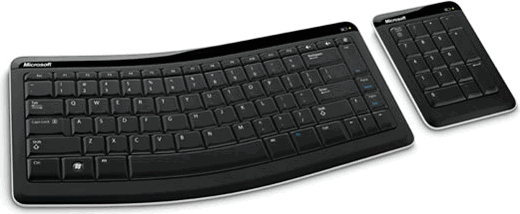
One big issue with a Bluetooth keyboard over a WiFi keyboard is it doesn’t automatically work out of the box and has to be paired with your computer first. A WiFi keyboard will likely work as soon as the wireless receiver is plugged in and its driver is automatically installed. Before connecting your Bluetooth keyboard to your computer device, here are some standard practices to help prevent you from running into errors.
1. Ensure that the computer and keyboard are paced in pairing mode. This not only allows your computer and keyboards to recognize each other as pairing devices. On regular Bluetooth keyboards, you may need to hold down the pairing button for a little over 5 seconds to make the device discoverable. Some have a LED blinking light that becomes solid once the keyboard is paired with the computer.
2. If the Bluetooth keyboard has a battery slot, insert the right battery size according to the manufacturer’s instructions. Although, some Bluetooth keyboards come with built-in rechargeable batteries that need to be charged before they can come on.
3. Furthermore, you can update the keyboard driver using DriverFix. This update tool allows the user to customize their keyboard and prevent future issues with outdated or missing drivers. After installation, allow the software to perform an initial analysis and download the necessary keyboard drivers. Use the DriverFix tool to get the latest drivers for your keyboard, as the application has over 500,000 drivers available for all types of devices. Download the DriverFix tool here.
Here we show you various ways to connect your Bluetooth keyboard to your computer in Windows 10, 11, and 7.
Connect A Bluetooth Keyboard In Windows 10 and 11
Compared to older Windows operating systems like Windows 7 or Vista, Windows 10 comes with a newer GUI to install Bluetooth devices. Windows 11 also shares the same basic connection interface although some of the options in Settings have been tweaked and updated.
Connect Bluetooth Keyboard In Windows Settings
1. Open Windows Settings and go to Devices (Bluetooth and devices in Windows 11), type “Bluetooth” into Start, or right click on the Bluetooth Devices icon in the System tray and select “Add a Bluetooth device” from the menu.
2. Click the button at the top with a Plus sign to add a device.
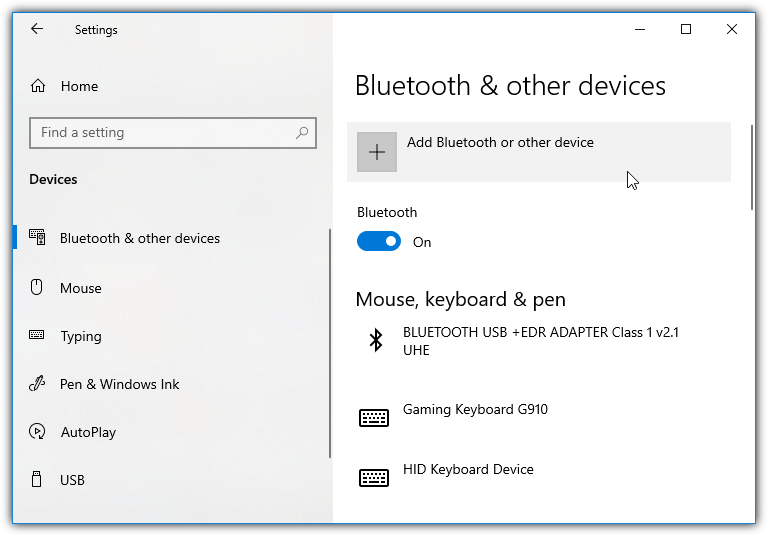
3. Select the top option of Bluetooth from the list.
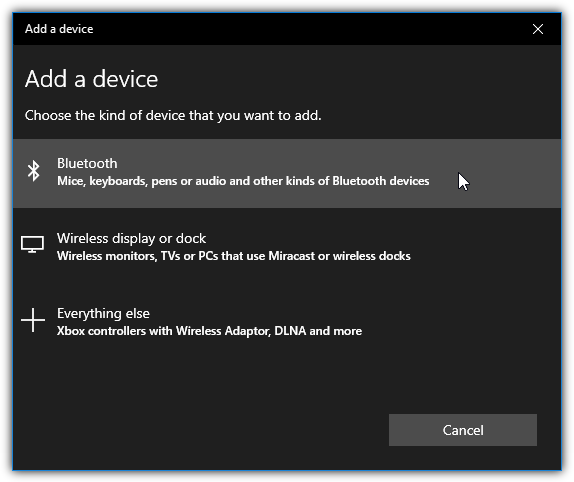
4. Press and hold the Connect button that is usually on the back or underside of the keyboard. There’s probably a light on the keyboard that will start flashing indicating it is ready to pair.
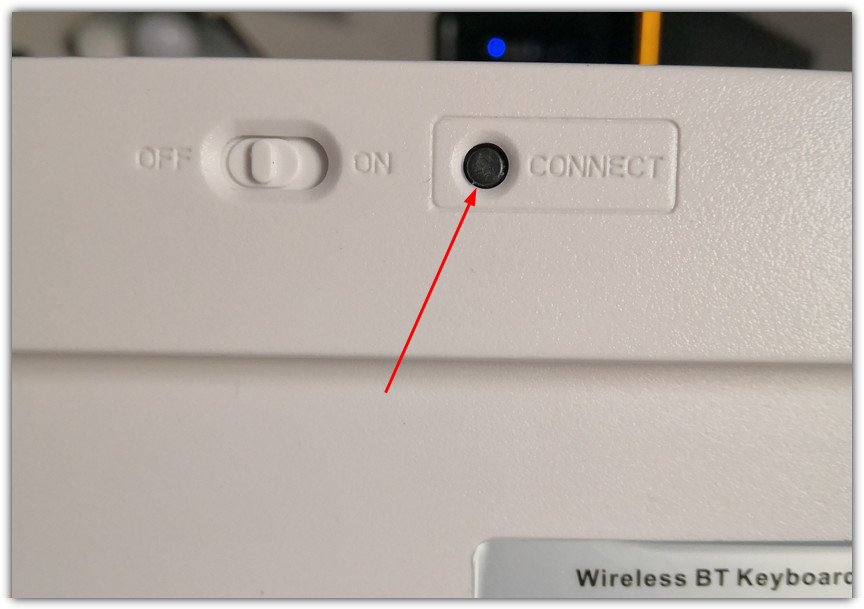
5. Your keyboard should now be found and appear on the list of discoverable devices. Click on it.
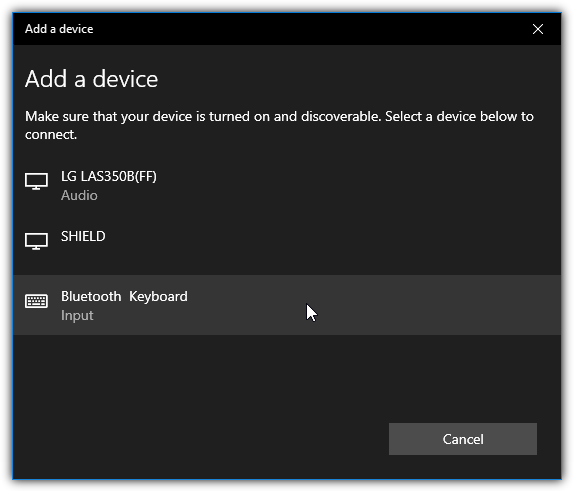
6. The next window will show an eight digit passcode. Type this passcode on the Bluetooth keyboard you are trying to pair, then press Enter. Note you do not receive any visual feedback about whether you are typing in the correct passcode, so enter it slowly and carefully.
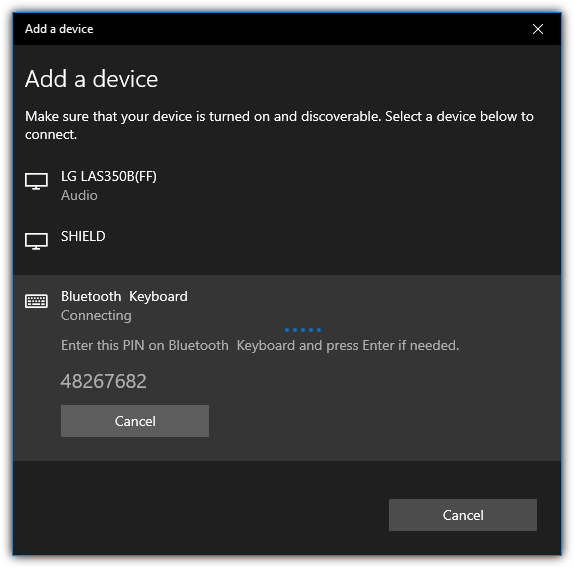
The keyboard should now be connected and will show in the list of devices
Connect Bluetooth Keyboard With The Device Pairing Wizard
The Device Pairing Wizard is essentially the way you connect a Bluetooth keyboard in Windows 7, but it still works in Windows 10 and 11.
1. Type “devicepairingwizard” into Start, the Windows Run box (Win+R), or the Taskbar Search bar/window, and press Enter. If you don’t have a keyboard connected at all, download the Device Pairing Wizard desktop shortcut we have created and double click on it from inside the Zip file.
2. Press the connect button on your Bluetooth keyboard and it should appear in the list of devices. Double click on the keyboard or click once on it and press Next.
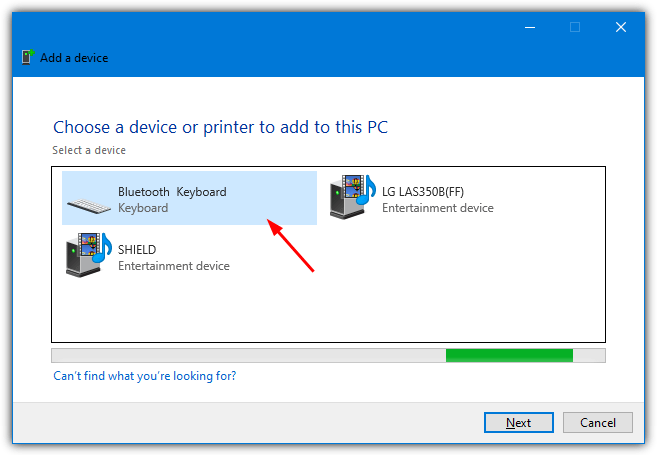
3. The next window will show an eight digit passcode similar to the Windows settings method above. Type the passcode on the Bluetooth keyboard to be connected and press Enter.
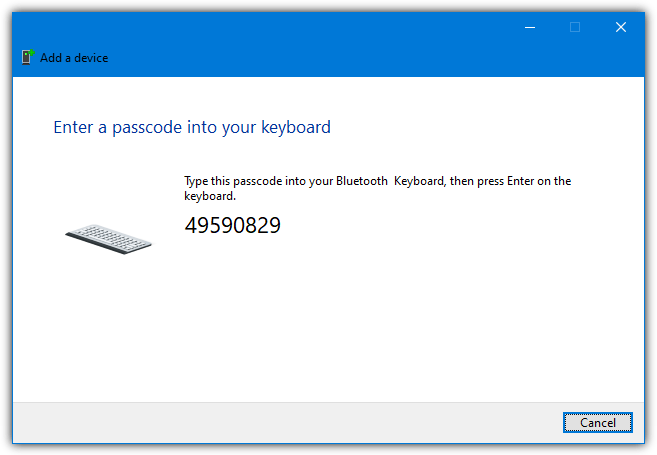
If You Are Asked For A PIN While Pairing
Instead of an eight digit passcode to connect your Bluetooth keyboard, you might be asked to enter a PIN. This can happen if you have previously typed in the passcode incorrectly.
1. In the box that asks for a PIN, enter “0000” and press the Connect button below. If you don’t have a physical keyboard connected, right click on the Taskbar and select “Show touch keyboard button”, click the keyboard icon in the system tray and use the virtual keyboard to enter the four zeroes.
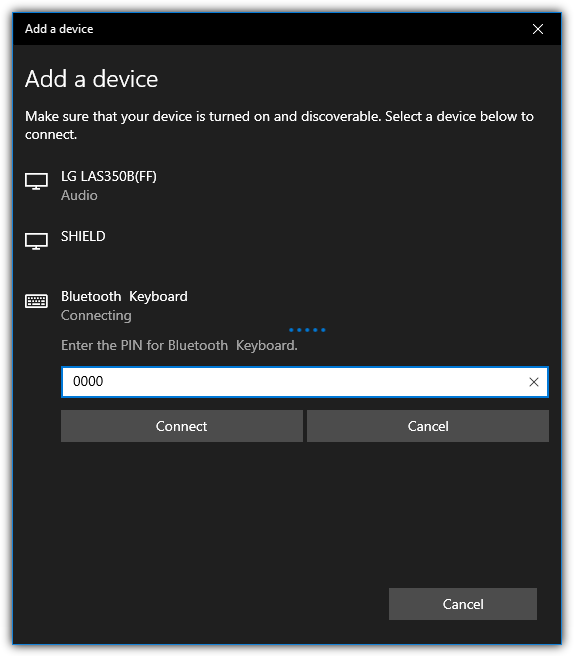
2. As soon as the PIN box and the Connect button become greyed out, on the Bluetooth keyboard type “0000” and press Enter. This should connect the keyboard.
Note that this can also happen with the Device Pairing Wizard. It won’t specifically ask for a PIN but will instead say “You might need to enter the same passcode into the keyboard”, which is actually the PIN. Simply type “0000” into the text box and press Enter, then type “0000” on the Bluetooth keyboard and press Enter.
Remove the PIN Requirement While Pairing
When you connect your keyboard with a PIN, Windows will ask for the PIN again the next time you connect. You can revert back to asking for the eight digit passcode with these simple steps.
1. Open the Device Pairing Wizard by typing “devicepairingwizard” into Start or the Run dialog. Download the Device Pairing Wizard desktop shortcut from above if you don’t have a keyboard connected.
2. Press the Connect button on the keyboard and double click on its entry in the devices list when it appears.
3. In the Enter the passcode window, simply click on “Or try entering a passcode on it”.
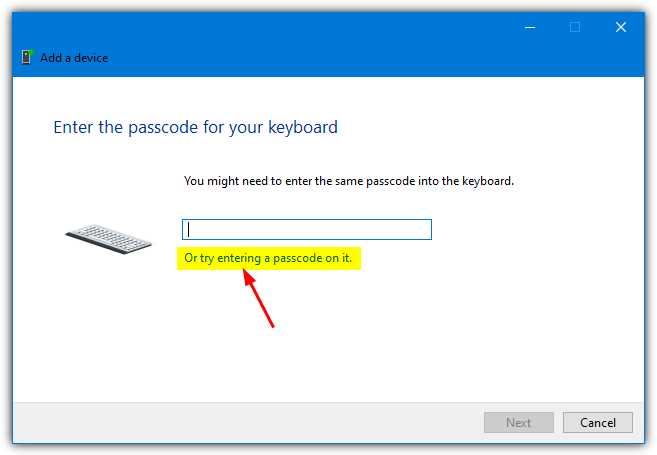
4. This will show the normal eight number passcode that you type in on the Bluetooth keyboard, followed by pressing Enter.
Connect A Bluetooth Keyboard in Windows 7
As we mentioned above, Windows 7 uses the Device Pairing Wizard to connect Bluetooth devices. However, there’s two different ways you can do it, connect using a passcode or connect without using a passcode.
Connect Bluetooth Keyboard using A Pairing Code
1. Right click on the Bluetooth icon in the system tray and select “Add a Device”. Alternatively, type “devicepairingwizard” into Start, or the Run dialog (Win+R), or download the desktop shortcut.
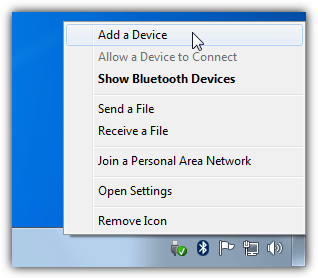
2. Press and hold the Bluetooth Connect button located on the back or side of the keyboard. There may be a light flashing to indicate pairing is enabled.
3. When the keyboard is found, double click on it or select it and then click the Next button.
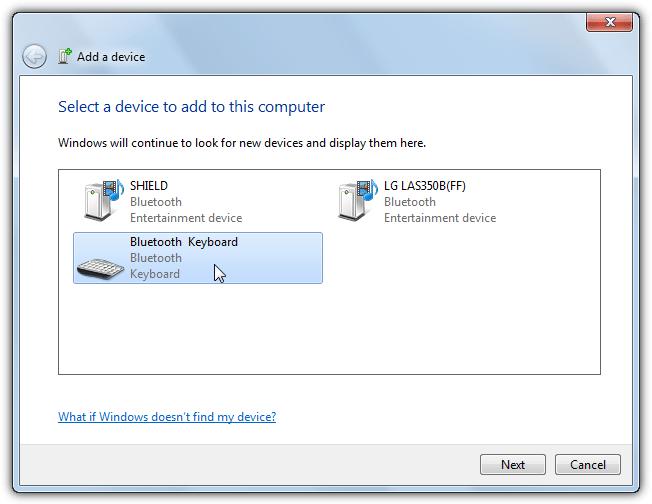
4. The next window will show an eight digit code which you should type on the Bluetooth keyboard followed by pressing the Enter key.
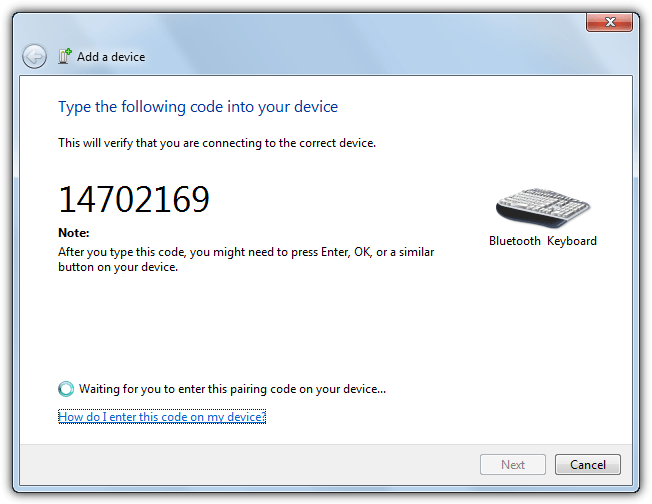
The Bluetooth keyboard should be installed and listed in Devices and Printers.
Connect Bluetooth Keyboard without A Pairing Code
Unlike Windows 10 and 11, Windows 7 is able to connect a Bluetooth keyboard without any type of passcode or PIN. Windows 10 used to be able to do this but the function was removed in one of the major biannual updates.
1. Right click on the Bluetooth icon in the notification tray and select “Add a Device” or download the shortcut.
2. If the keyboard is not discoverable, press and hold the Bluetooth Connect button.
3. When the keyboard is found, right click on it and select Properties.
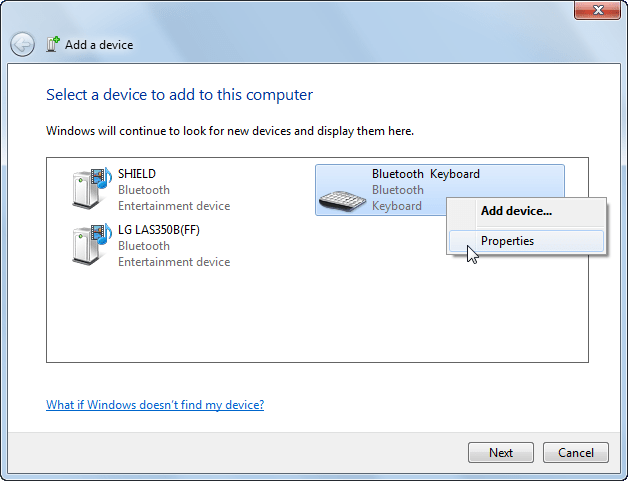
4. There will be a checkbox “Drivers for keyboard, mice, etc (HID)” under Bluetooth Services. Check it and click the Apply button. Wait for the installation to complete and then click the OK button to close the window.
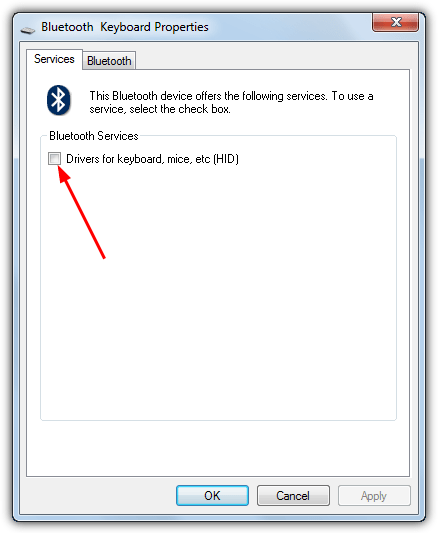
The keyboard should now be connected without requiring a passcode.



